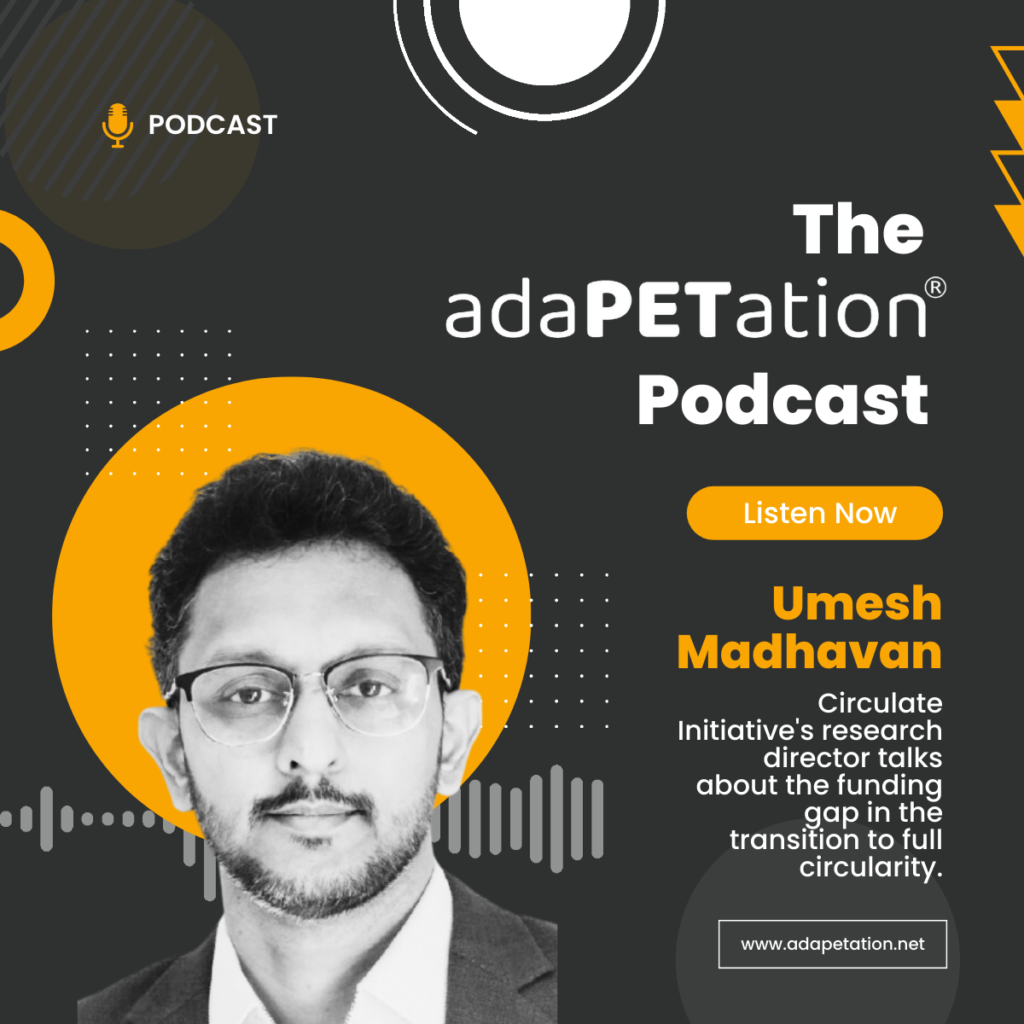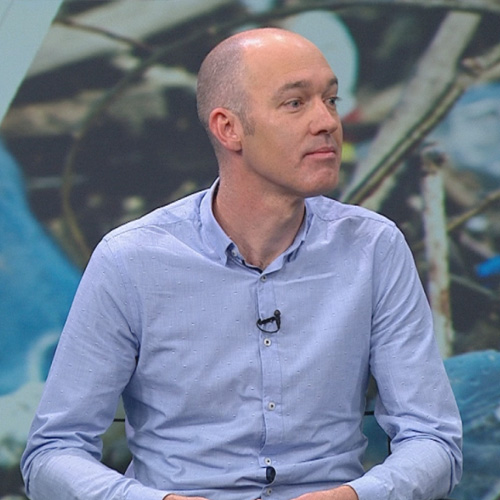
Circulate Initiative’s data-driven approach has shifted perspectives on plastics. Leveraging tools like the Plastic Circularity Investment Tracker, it is highlighting untapped investment opportunities, positioning plastic as an important ally in addressing global challenges. Research director Umesh Madhavan outlines its transformative approach.

Established in 2018 with social impact investor, Circulate Capital, as one of its founding funders, Circulate Initiative was created to meet the needs and address the systemic barriers to a plastic circular economy.
Umesh Madhavan, research director of the Circular Initiative, has been driving the data-driven approach of the organization empowering its members with the information required to meet the organization’s plastic pollution challenge.
One of the most recent tools created by the organization is the Plastic Circularity Investment Tracker, launched in March 2022. It’s a tool that provides necessary transparency on capital flows, something currently lacking in the space.
”We found out that there’s absolutely no tool which provides the necessary transparency on capital flows which are taking place to drive a circular economy for plastics,” says Madhavan.
“People really don’t know the amount of capital flowing into this space, investors are really not familiar with plastic circularity, nor do they realize that this is an investable space,” he says.
Likewise, he adds, “Investees, on the other hand, do not know who’s investing in this space, or what amounts. And as you look at the whole plastics pollution challenge, there’s a range of solutions which are needed, as you earlier referenced, downstream solutions, including waste management, recycling and recovery or early stage solutions, which could include alternative materials. It could include refill, reuse solutions or a broad range of technology solutions as well, which can help overcome this challenge. However, nobody knows what amount of capital is actually flowing into the space and how much of it is going downstream versus how much of it is going upstream.”
Visualizing What Is Needed to Shift to Circularity
It was management guru, Peter Drucker who famously said, “If you can’t measure it, you can’t manage it,” and it’s central to the thought process behind creating greater visibility on where money is being invested and what kind of organizations are working on circularity.
The tool has been successful in providing private investment data specifically on emerging economies globally, including insights on a geographic level and has proved popular with investors and solution providers alike.
One of the notable early findings is the significant funding or financing gap, particularly upstream when compared with downstream solutions.
Madhavan suggests that investors should use the investment tracker, which measures and characterizes investment, to identify investment opportunities in plastics circularity and identify the most nested systems within the industry. It will also help solutions providers with data on the investment funds betting on circularity.
”Recycling and recovery are better understood,” he says. “The economics are proven, profitability has been proven. So as an investor, especially as a private equity investor or any investor for that matter, who’s looking for a return on their investment, this seems obviously to be a much safer space to invest compared to early stage solutions.
”Upstream solutions are still relatively nascent or new. Some of them are not exactly but in general, when you look at it from an emerging market perspective, something like alternative materials are relatively newer technology and investors are therefore cautious when it comes to investing in or financing these more novel or innovative ideas.”
Filling the Funding Gap
Findings from the investment tracker highlight how USD$4bn of private capital actually has entered the system between 2018 and the first nine months of 2022. “You can contrast that with what is really needed. The OECD did a study which estimated that USD$27bn is required between now and 2040,” says Madhavan.
”What we also realized is that a lot of that money, of that USD$4bn – more than 80% – is actually going into downstream solutions. So waste management, recycling, recovery related solutions in relation to plastics circularity, and there’s very little capital which is going upstream.”
Recent conversations surrounding the implementation of a Global Plastics Treaty have highlighted the concern that not enough attention is being paid to reuse systems with it proving much easier to agree to how to bolster downstream solutions.
”We hope to change that because once there is a better knowledge, appreciation and understanding of the fact that there is no more money needed at the upstream part of the value chain, that will change. Hopefully we’ll get more capital diverted to the upstream part of the value chain,” says Madhavan.
Joint research between the Circulate Initiative with the World Economic Forum and the Global Plastic Action Partnership, has published case studies of successful investments that have taken place in analogous sectors.
Madhavan believes that investors can learn from these case studies and capitalize on the growth opportunities in plastic circularity and argues that there is a need for more capital and capital flows to be accelerated, but also different types of varieties of capital to make sure that the different kinds and types of organizations that are working in this space are adequately funded and financed.
Plastic’s Complex Relationship with Greenhouse Gas Emissions
It’s clear, he says, that plastic has an important role to play in putting the world’s systems back into balance and the role of net zero plastic in the shift towards decarbonization.
Circulate Initiative is developing another tool – the Plastic Lifecycle Assessment Calculator for the Environment and Society – that looks at calculating the carbon emission benefits of introducing circular plastic solutions in different locations in Asia to further aid investors making decisions on the best way to reduce their carbon footprint.
He believes that investing in plastics circularity and the reduction of plastic waste is an investable space that can help address some of the world’s biggest problems, such as global warming.
”This is part of the reason why we have developed tools like PLACES to just better explain and understand the connection between the climate and the plastic pollution problem. There hasn’t been enough discussion or work in contextualizing the plastic pollution problem alongside the climate challenge issue,” he says.
JOIN THE MOVEMENT
If you like this content and would like to help close the loop on plastic waste then join the adaPETation® Network by clicking on the button below.
Share it
THE HISTORY OF PLASTIC
Throughout the history of plastic, PET has been crucial in keeping food fresh with lightweight and durable packaging solutions that have helped reduce food waste for almost a century. Learn all about the invention of plastic and the important role it has played feeding people and saving the lives of humans and elephants in the adaPETation® timeline of the history of plastic.





